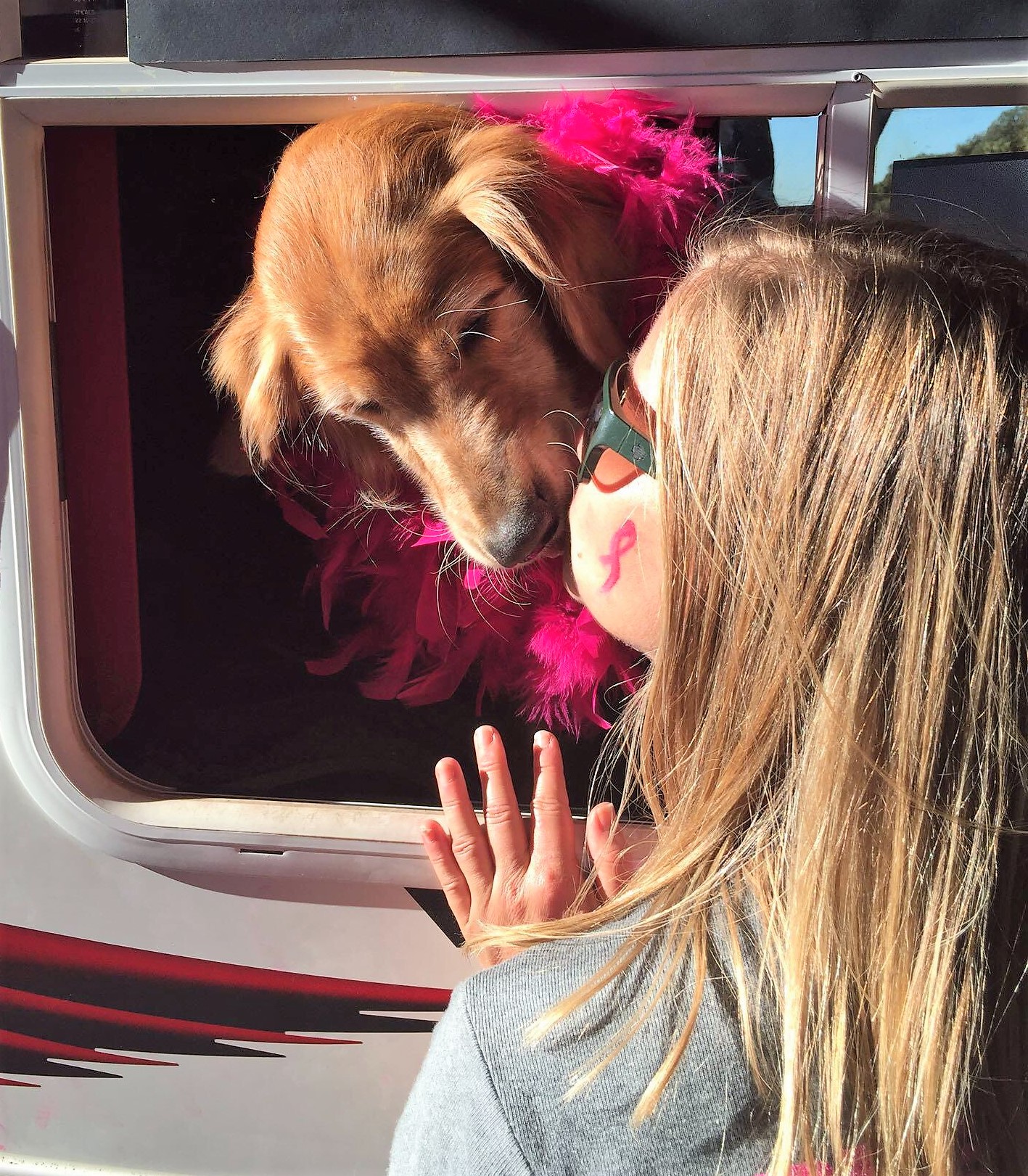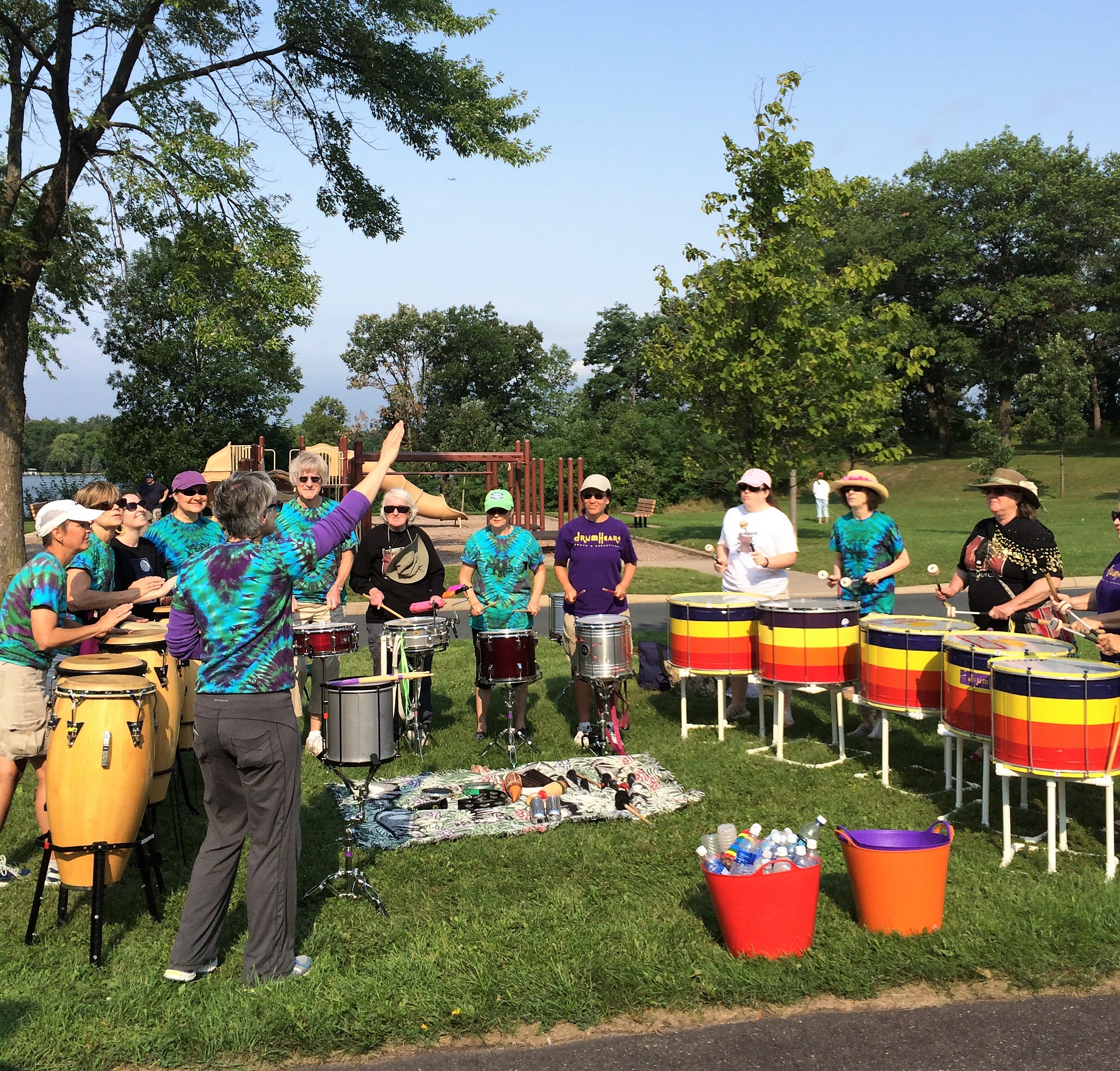The 3-Day is sixty miles of fun, excitement, and friendship, all of which make a big difference in the fight against breast cancer. Part of that excitement though, doesn’t just come from our walkers. In addition to the camaraderie of teams and walkers and crew members all coming together, there are also cheering stations along the route to give an extra boost of energy.

We asked our social media community, coaches, and the rest of our 3-Day team which cheering stations have given you an extra special boost! You all had your favorites from 3-Days past, and we highlighted some of them below:
Michigan 3-Day
Rebecca Fox on Facebook: The line of what seems like 100s of cheerleaders in Livonia on Day 3 in Michigan. Also, Plymouth on Day 2.
@amybray1 on Twitter: The Michigan 3-Day. Best cheering station is the hundreds of cheerleaders on Sunday morning. I get all choked up, every single time!!

San Diego 3-Day
Marianne Masterson, San Diego Coach: In San Diego, my favorite is ‘Lilly the Golden’ the kissing dog! She hangs out in her RV and walkers can approach the window and sweet Lilly will give them a little dog kiss. Lilly’s RV is called The Mothership and she is associated with the team Save Areola 51. The team has a large following and the RV can be found each day on route. The group started giving out stickers a couple of years ago because Lilly has become famous! Last year she had some special doggie friends helping her out as well. It’s got to be tiring to have to give so many kisses, so I guess they had to call in some support!

Michelle Anne Crago Buessing from Facebook: Team Michelle Lemonade stands in San Diego with the CUTEST kids!!
Alyssa, 3-Day Social Media Manager: The “pickle people” have been providing pickles to walkers for about six years, now.

“Pickles have potassium, they help leg cramps, and it helps prevent more cramps.
“We come out all three days and hand out pickles – they love ‘em!” said Bill, one of the head picklers. He got involved when his granddaughter started walking. He now passes out pickles every year along with his wife Kathleen, sons, daughters, and grandkids. They set up at the top of San Diego’s infamous San Juan Street Hill on Day 3.

Philadelphia 3-Day
Heather VanDyke from Facebook: Always a good year walking in Philly when you get to see the Determined Divas & Dawgs … music, high fives & big smiles exactly when you need them along the route (rain or shine) ?
@phillywalker from Twitter: City Avenue on Day 2 in Philly outside the Chili’s, but the absolute best is Day 1 and the kids at the school about a mile in.

Twin Cities 3-Day
Stephanie Mayer, Twin Cities Coach: The Drum Heart group you’ll find every year on Day 2 at beautiful Lake Josephine Park, right along Mile 10.
There are sure to be some great cheering stations, new and old, on the 2017 3-Days. While all these cheering stations might not be back for another year, we can guarantee that all walkers will feel the love and excitement from our supporters.
Which cheering station do you have great memories of? Tell us in the comments! Or, do you know somebody that wants to set up a private cheering station along the 3-Day route? Contact your local coaches today by calling 800-996-3DAY!


 Hope and passion are something Heather and her family have in spades, as is evidenced by their increasing involvement in the cause. This involvement begins, and continues, with fundraising.
Hope and passion are something Heather and her family have in spades, as is evidenced by their increasing involvement in the cause. This involvement begins, and continues, with fundraising.

 Opening Ceremonies
Opening Ceremonies
